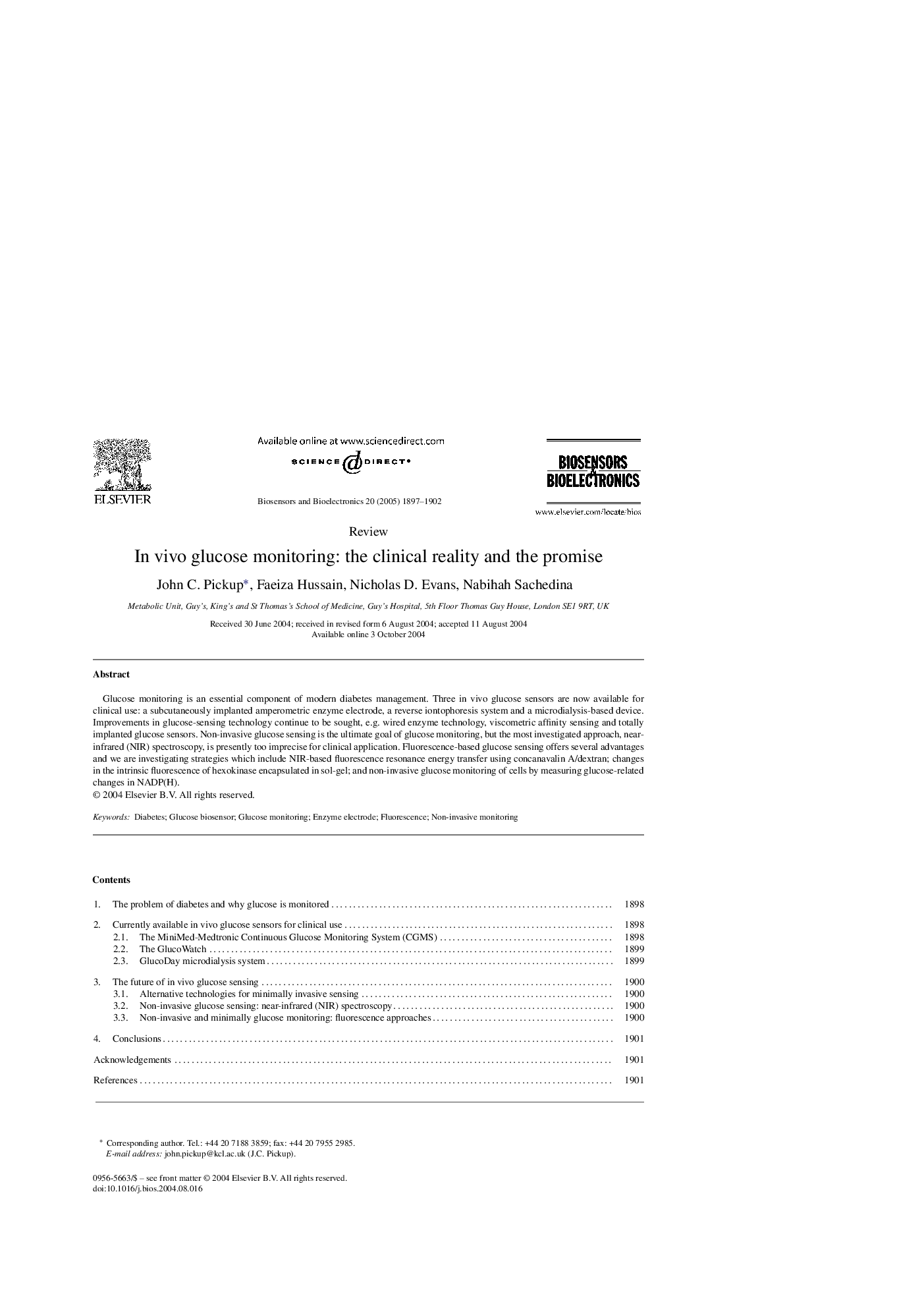| Article ID | Journal | Published Year | Pages | File Type |
|---|---|---|---|---|
| 870478 | Biosensors and Bioelectronics | 2005 | 6 Pages |
Glucose monitoring is an essential component of modern diabetes management. Three in vivo glucose sensors are now available for clinical use: a subcutaneously implanted amperometric enzyme electrode, a reverse iontophoresis system and a microdialysis-based device. Improvements in glucose-sensing technology continue to be sought, e.g. wired enzyme technology, viscometric affinity sensing and totally implanted glucose sensors. Non-invasive glucose sensing is the ultimate goal of glucose monitoring, but the most investigated approach, near-infrared (NIR) spectroscopy, is presently too imprecise for clinical application. Fluorescence-based glucose sensing offers several advantages and we are investigating strategies which include NIR-based fluorescence resonance energy transfer using concanavalin A/dextran; changes in the intrinsic fluorescence of hexokinase encapsulated in sol-gel; and non-invasive glucose monitoring of cells by measuring glucose-related changes in NADP(H).
